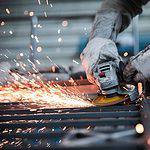We all have heard about shock absorbers. As the name implies, it is used to absorb shocks occur during driving on uneven roads. It is also used for stability of vehicle under sudden acceleration or braking condition.
The most common type of shock absorber is Telescopic type hydraulic shock absorber or sometimes called telescopic shock absorber.
Let’s before start to discuss about telescopic type first we should discuss about some more detail about shock absorber.
Why we need a shock absorber?
An automobile needs a powerful suspension system to perform well on any road conditions. A good suspension should compromise between rigidity and flexibility. If a suspension system is too rigid it will not absorb shock and if it is too flexible, it will vibrate after passing the road bump. We need a device which can provide the damping effect during shock according to the requirement. This device is called shock absorber.
It is major part of any suspension system. A suspension system is combination effect of suspension spring and a shock absorber. The spring provides flexibility during jumps while the shock absorber provides damping effect to absorb shocks.
The very common shock absorber is telescopic type. It is an hydraulic shock absorber. The name telescopic is derived because the shape of this shock absorber is completely matches with the ancient telescope. There are two types of this shock absorber. First one is twin tube telescopic type and other one is mono tube telescopic type. In this article we will learn them in detail.
Twin Tube Telescopic Shock Absorber:
As this name implies this type have two tubes. Before discussing about it, let’s try to read out the picture given below.
As we shown in the diagram, this type of shock absorber have twin tubes one inner tube shown by symbol A and other outer tube shown by symbol B. There are two 2 way valves one is shown by V1 and other is by V2. Valve V1 is connected with a piston rod and free to move vertically inside the tube A. The Valve V2 is fixed at one end of the tube A. Oil is filled inside the tube A below the valve V1. At the initial condition piston or we can say valve V1 is at middle of the cylinder. The annular space between tube A and B is half filled with the oil. There are two eyes of the shock absorber which is shown by E1 and E2. E1 is connected to the chassis frame and E2 is connected to the axle.

When the vehicle come across a bump, the eye E2 tends to move upward. Therefor to absorb the bump valve V1 start to move downward which compress the fluid trapped between the valve V1 and V2. This will pressuring the valve V1 and V2 thus the oil start to move from upper side of the valve assembly through valve V1 and also some oil move in the annular space between tube A and B through valve V2. This process converts all the vibration energy into fluid friction and absorbs shocks. When the vehicle rebound, the valve V1 start to move upward which again pressuring the valve V1 hence it open again and the oil start to flow below valve V1. During its upward movement it also sucks some oil from the annular space between tube A and B thus the vehicle get its initial condition.
This all process can be easily understand by following video.
Mono Tube Telescopic Shock Absorber:
This is another type of shock absorber used in automobile industries. As the name implies this type of telescopic shock absorber has one tube which two chambers. To understand its construction let’s try to read out the image given below.
There are two piston one is shown by P1 and other is by P2. Piston P1 is attached with a piston rod. Piston P2 is floating piston which can move upward and downward according the pressure its upward and downward side. This shock absorber have two chamber A and B separated by the floating piston P2. The upper chamber A is filled with the oil and lower chamber is filled with high pressurize nitrogen gas. There are two eyes of the shock absorber which is shown by E1 and E2. E1 is connected to the chassis frame and E2 is connected to the axle.

When the vehicle come across a bump, the eye E2 tends to move upward. Therefor to absorb the bump piston P1 start to move downward which compress the oil situated between chamber A. This will rise the oil pressure thus the floating piston start to move downward and compress the gas till the oil pressure and gas pressure equalize. This process uses the vibration energy of bump to compress the gas thus absorb vibration. When the vehicle again come across the level road, the piston P1 start to move upward which reduce oil pressure situated upper side of floating piston. Due to this pressure difference the floating piston start to move upward thus the vehicle gets its initial position.
This process can be easily understood by following video.
Advantages of telescopic shock absorber:
- This shock absorber is available in various size according to the requirement.
- Noise free operation
- Less maintenance required.
- Low manufacturing cost.
- High operating speed.
This is all about telescopic type hydraulic driven telescopic shock absorber. If you have any doubt about this type, ask by commenting. If you like this article, don’t forget to share it on social networks. Subscribe our website for more informative articles. Thanks for reading it.








What are the disadvantages of telescopic damper?
What r the disadvantages of telescopic suspension system?